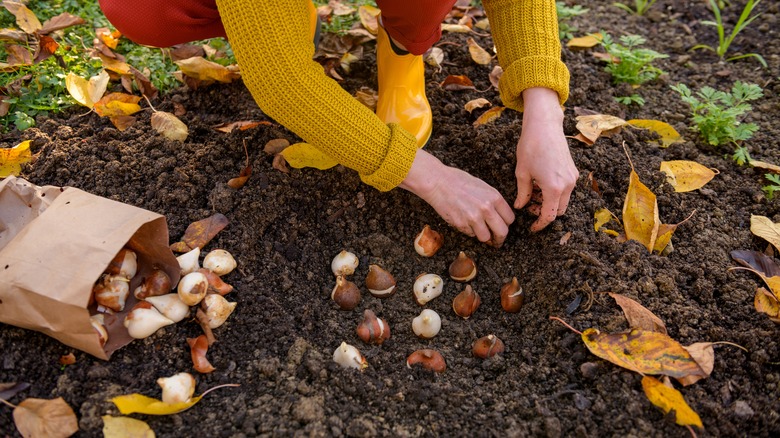Bulbs, Rhizomes, And Corms: What's The Difference?
Have you ever wondered whether there's a difference between bulbs, rhizomes, and corms? After all, they're all planted in the soil and can grow the most amazing flowers! Essentially, these are underground nutrient storage systems that hold all of the energy for the emerging plants to flourish and bloom. While you might think these terms are interchangeable, that's simply not the case. The makeup of each of these underground units is slightly different. It helps to know what each one is so you can plant them correctly and actually get the beautiful blooms or other plants you were hoping for. For example, if you want to know how to plant and grow beautiful gladiolus bulbs in containers, it helps to understand that these outstanding blooms grow from corms. These will produce small swellings to the side, known as cormels, that you can then sever and use to start a whole new collection of plants.
For deeper insights into these three variations, House Digest exclusively consulted Tiffany Selvey, our Garden Editor and in-house Master Gardener. She was happy to answer a few questions so that you'll have a clearer understanding of how to tell one from the other when you're looking at a selection at the store, or you've just been gifted a bag of them from a friend.
The main differences between rhizomes, bulbs, and corms
When House Digest exclusively asked Tiffany Selvey to briefly explain the differences between these three fleshy, below-ground plant storage systems, she responded with, "Many times these terms are used interchangeably, but there are distinct differences in how they are structured, should be planted, and how they reproduce." For example, you can easily propagate through rhizome or root division by digging them up and separating them so that each section has at least one or two growth points. This is different from bulbs and corms, which produce tiny babies around the sides of the original structure that can just be cut off and planted elsewhere.
Selvey goes on to say, "Bulbs and corms look pretty similar; each is bulbous with a pointy top and rooted bottom; however, their internal structure is quite different. Corms are actually solid underground stems. Within a bulb is a combination of everything that will eventually emerge — the stem, leaves, and even the bud. The term rhizome is also used for underground stems, but these come in many shapes and sizes. You'll most commonly see them in a tuberous form."
Why it's important to know the differences
Before we delve into why you need to know how to tell these apart, House Digest asked Tiffany Selvey to give us a few examples of the varied plants that grow from bulbs, rhizomes, and corms. Here's what she had to say: "Daffodils, tulips, and hyacinths are some of the most common bulbs you'll see at the store. Corms produce crocus and gladiolus. Bearded irises are among the most popular flowers that grow from rhizomes."
Speaking exclusively to House Digest, Selvey further explains why you should understand the differences by saying, "The most important thing to know is if the plant you're wanting to grow comes as a bulb, rhizome, or corm so you don't accidentally end up with something else entirely." It's also important to understand that bulbs and corms need to be planted the right way up so that the pointy end is at the top, while rhizomes, like those of bearded irises, are normally positioned at an angle. Plus, if you want these beauties to bloom successfully, it helps to have the very top of the rhizome exposed to the sun. Now that you have a better understanding, you might like to explore all the different types of bulbs you can plant in your garden in spring for a magnificent floral display that will amaze your friends and family.


